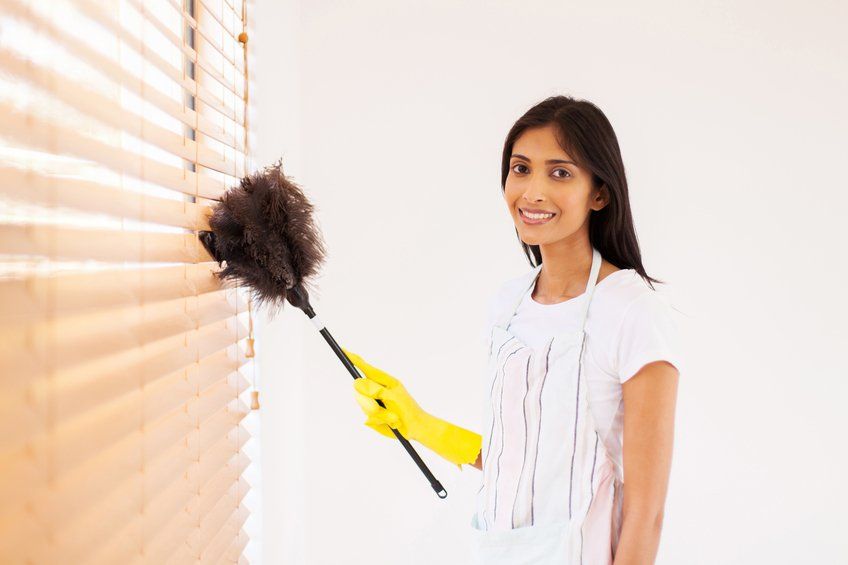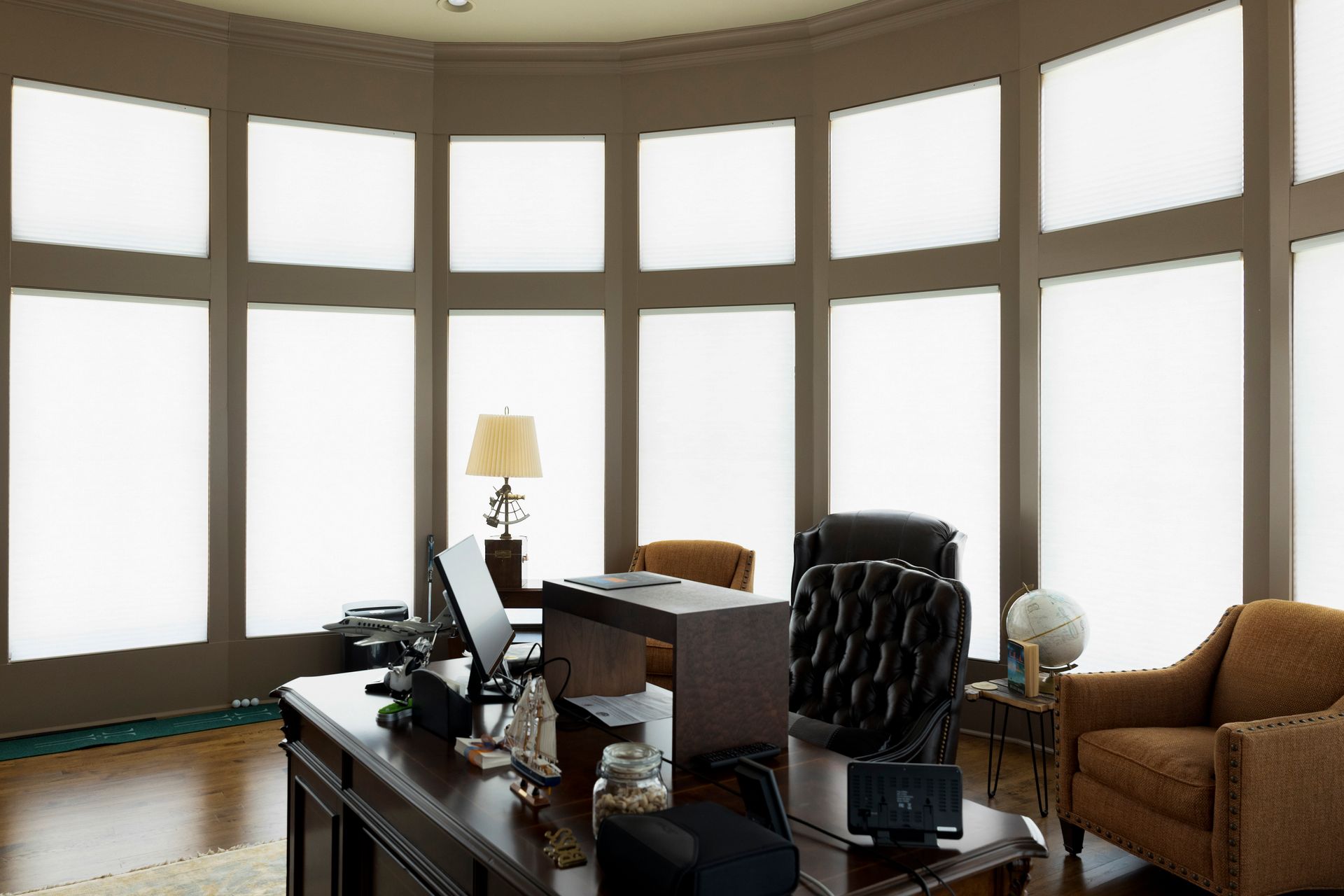
Window blinds are used for more than just controlling sunlight and providing privacy. They also can add beauty to a room. But to keep your window blinds looking new and serving you as long as possible, it’s critical that they be properly cleaned and maintained. Here are some basic guidelines for cleaning window blinds.
Wood Blinds
- After first tightly closing your wood blinds, lightly remove dust, using a feather duster, old paint brush or a vacuum cleaner brush attachment.
- Use an old sheet to catch dirt and grime that will fall on the floor.
- Dust, brush or vacuum all dirt and dust off each slat, one at a time.
- Then, close your blinds the other way and repeat the process.
- Never use water on wood blinds because this can destroy them.
- Also, do not expose wood blinds to sprinkler systems, rain, steam or high moisture. This means that you should not spray a window cleaning product directly onto a glass window. Instead, moisten the cleaning cloth with the window cleaner and then clean your windows.
Vertical Blinds
Vertical blinds tend to get even dirtier than horizontal ones, probably because they’re usually used for covering glass doors leading outdoors. Cleaning vertical blinds entails cleaning each individual slat, starting from the top and working down. Be sure you use an old towel or sheet to protect your floor from drips.
Some people even clean vertical blinds by unclipping the slats, laying them down on towels and cleaning each one individually. But this can be risky as it can be easy to break the plastic clips used to secure the slats.
Cleaning Drapes
- Vacuum drapes regularly by using a vacuum cleaner upholstery attachment. Because the folds and the top portions of the drapes tend to draw dust, it’s important to start at the top and finish at the bottom, cleaning all the surface.
- It’s best to have drapes dry-cleaned, rather than washing them.
- Always check the manufacturer’s guidelines, and you do wash your drapes at home, test a small inconspicuous spot. Use a mild detergent and warm water, noting if a color starts to bleed. If this happens, take your drapes directly to a professional dry cleaning service.
Cleaning Cellular Shades
- To avoid dust bunnies and shades on cellular shades, also known as honeycomb shades, you’ll need to vacuum your shades on a regular basis.
- The first step is rubbing off exceptionally dirty spots, using a brush extension of your vacuum cleaner. Be sure the shades are closed.
- All dirt and dust should be removed.
- Consider that shortening shades can help in preventing them from developing excess dirt and grime.
- You can immerse some types of cellular shades in water, but first check with the manufacturer. Wash your cellular shades by using warm water and just a small amount of mild detergent.
- Finally, hang your shades out to dry. Do not use a hairdryer, but if you do use one, apply the cool setting.
Cleaning Roman Shades
Spills and stains should be cleaned as soon as you notice them. You can use soda water or spray-on stain removers. Wash your shades before using spray-and-wash cleaning products.
For moderate dust buildup on decorative or embroidered shades, dust them, rather than vacuuming so that you don’t loosen threading. Use a duster that’s static-free. After you’ve cleaned the shades, it helps to apply a dust repellent, so dust won’t cling to your shades.
If your shades don’t have embroidered patterns, you can vacuum your shades, using a low setting.
Considerations and Warnings
- A feather duster is generally sufficient for cleaning blinds if there’s only a thin layer of dust on them. This is done by opening the blinds and dusting between each of the blinds so that dust can be removed from both sides.
- However, gentle vacuuming, using a vacuum cleaner attachment, may be needed for deeper cleaning. Use vertical strokes when vacuuming your blinds.
- To spot-clean your blinds, use a moistened sponge, using warm water and a soft cloth. If needed, you could add a small amount of mild detergent.
- Over-the-counter blind cleaners and a soft cloth are recommended for cleaning aluminum blinds.
- An old glove or sock can help in cleaning hard-to-access corners. It’s important to give your blinds regular cleaning. Consider that it can be harder to clean them and take more time when you allow too much dust and grime to accumulate.
- Be careful to avoid getting stained wooden blinds wet as water can easily compromise the finish. Rather than water, use a wood furniture cleaning product or lemon oil.
- Never scrub blinds too aggressively as this can remove color or damage a design.
Is it time to replace your window blinds? Let the window covering professionals at Just Blinds help you make the right choice. We provide onsite consultation, expert measuring and professional installation. Please contact us and learn more about our huge selection of blinds, drapes, Plantation shutters, shades and other window coverings.
Expert Advice by Just Blinds


